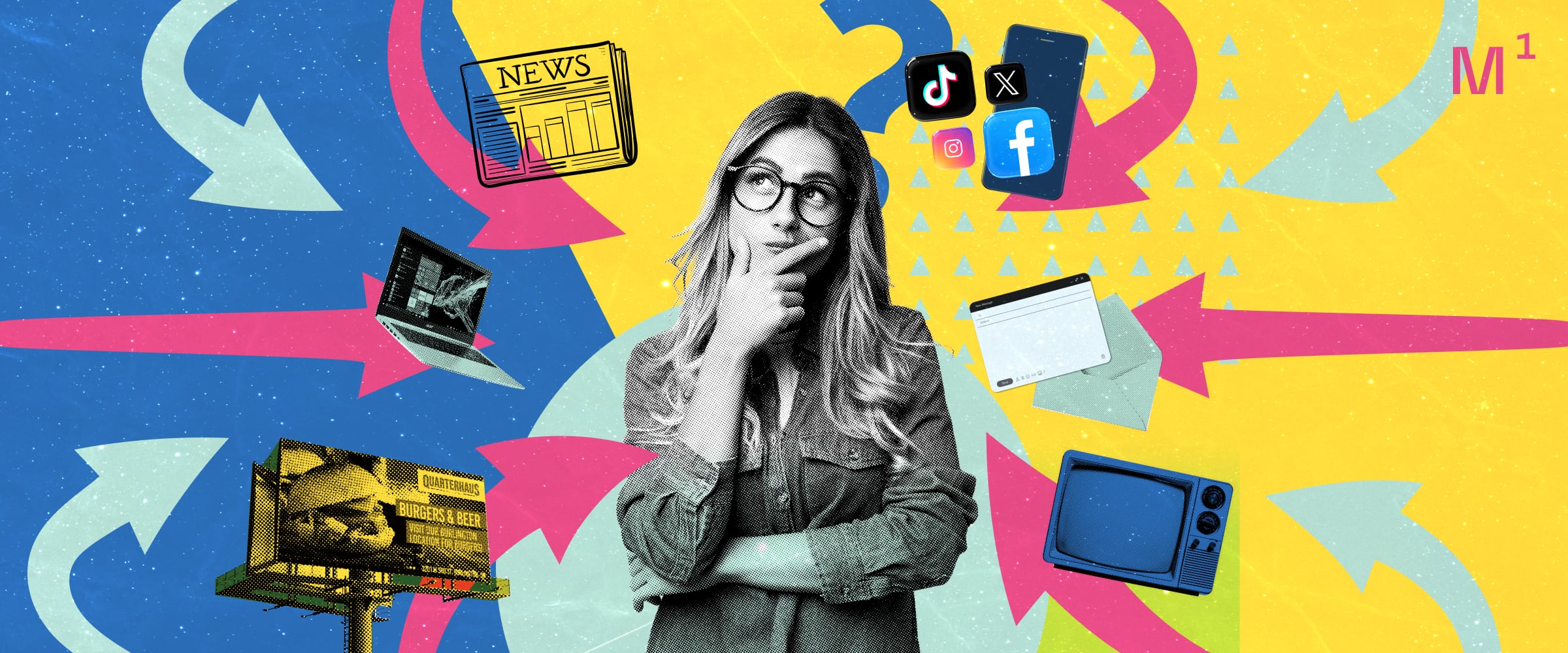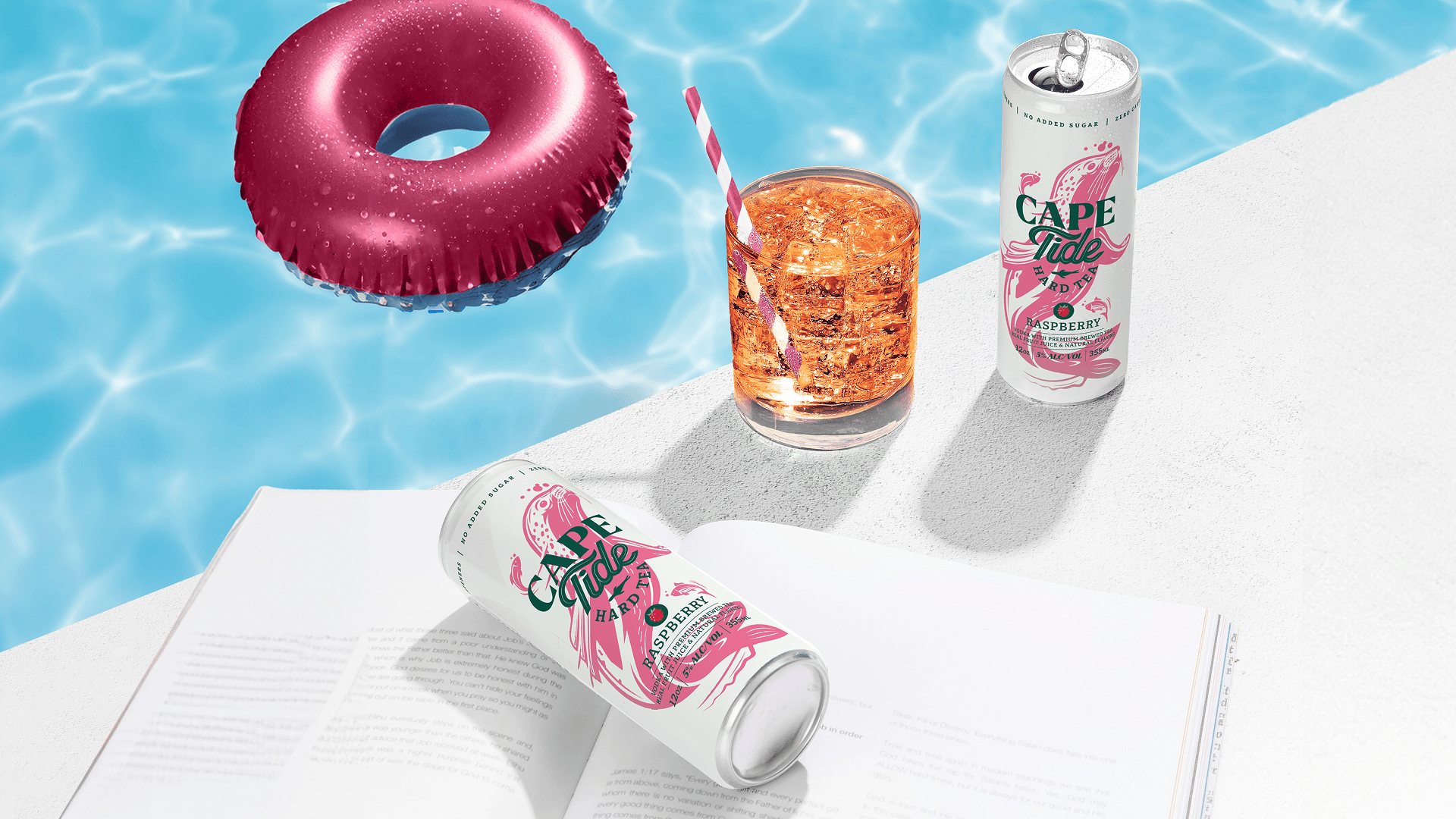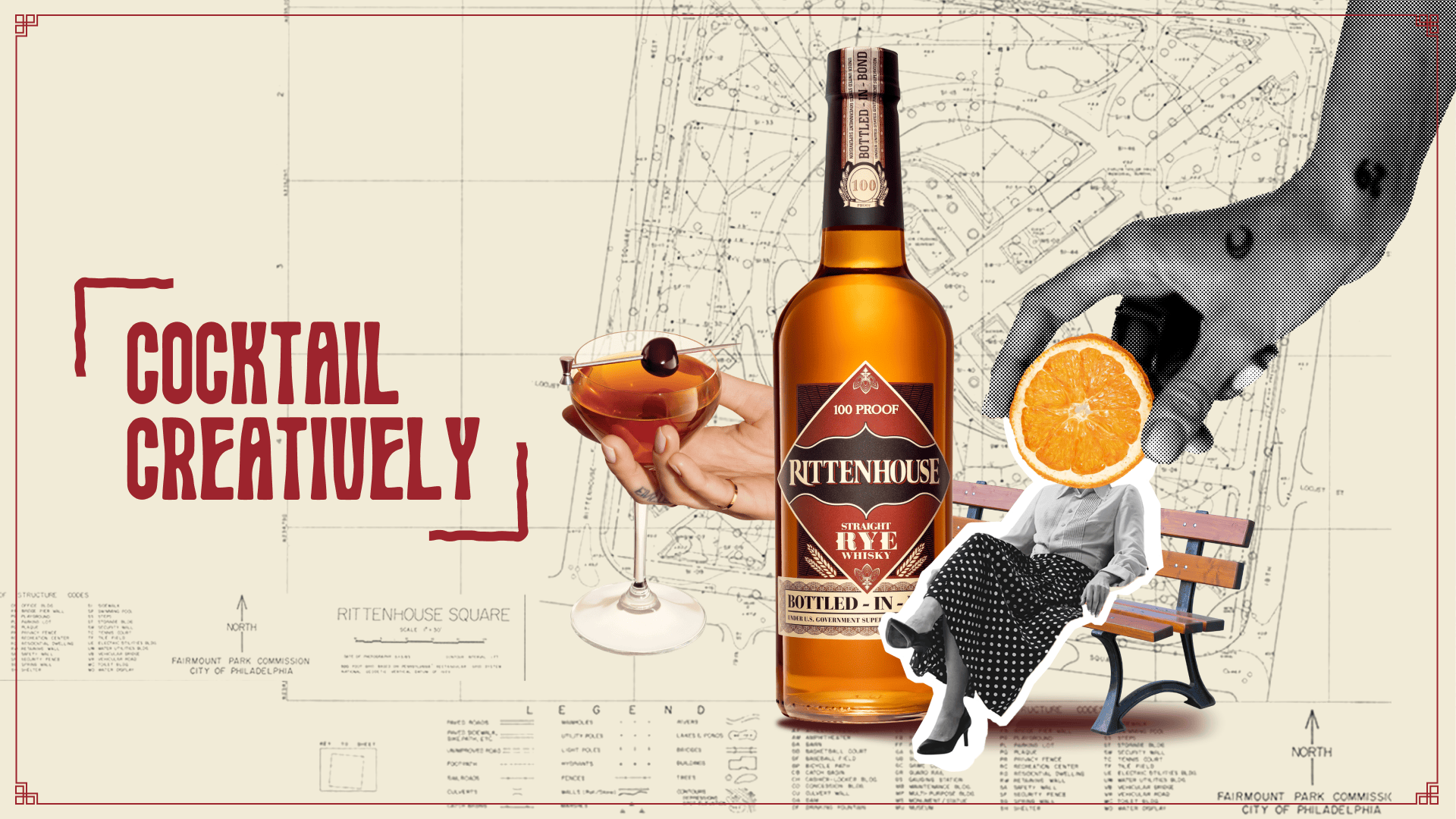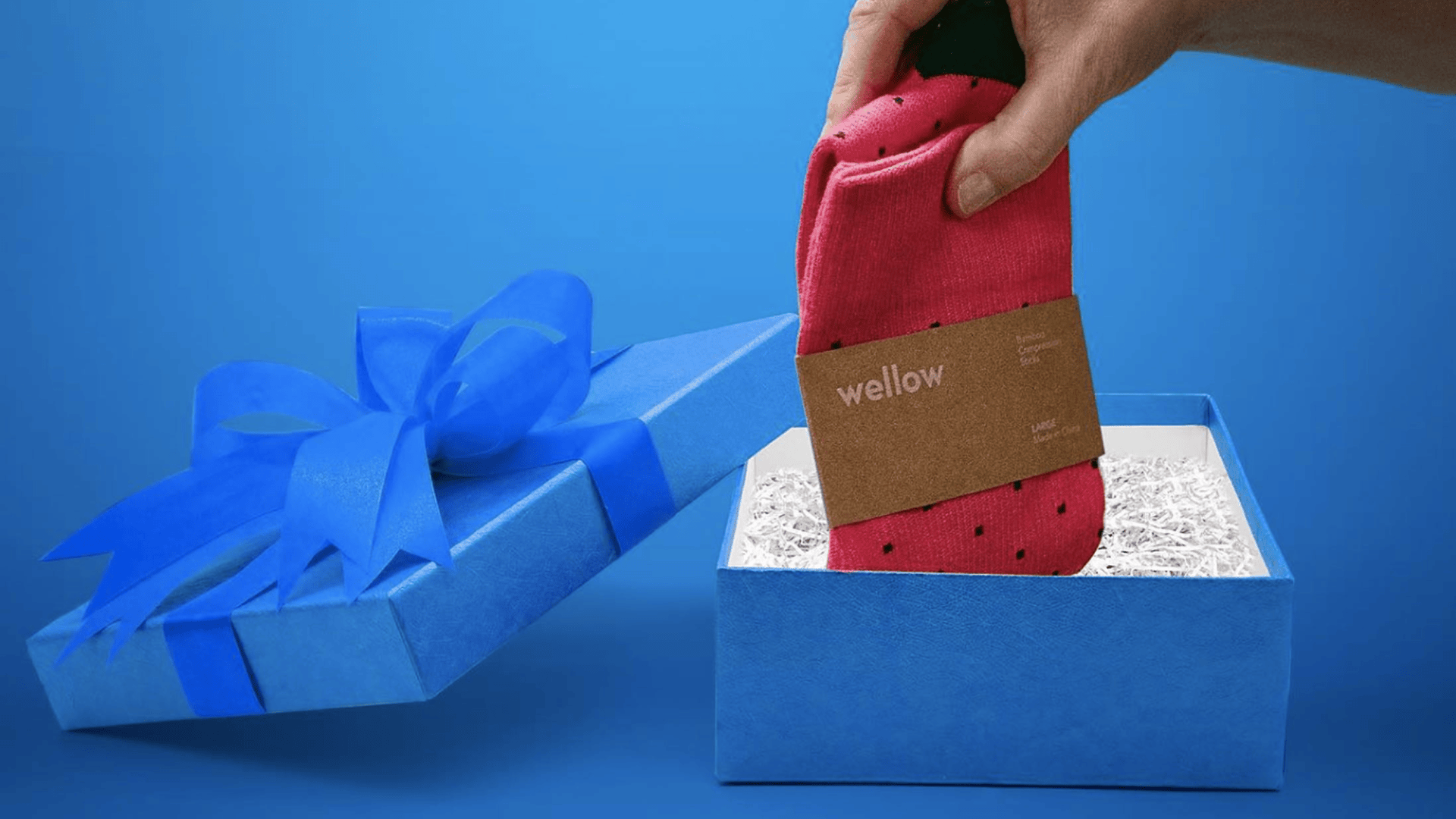
Mind Over Machine: How Memory Outranks Algorithms in Brand Choice
I remember standing in front of a room of CMOs nearly 15 years ago, enthusiastically describing the future of algorithms and what they meant for marketers. I spoke of how mass personalization was now possible—how connecting scattered data points across online behavior was going to deliver information consumers didn't even know they wanted or needed. It was marketing's dream come true.
Cut to today, and what I described impacts almost every area of our lives. Including, in ways that now trouble marketers’ sleep, the brands we choose, remember or even learn about.
Welcome to Your Algorithmic Bubble
You’ve likely heard the term “algorithmic bubble” or “filter bubble,” as tech entrepreneur Eli Pariser described it[i], which ensures that everything we see online is precisely curated to align with our apparent interests.
Every interaction across our digital lives—social media reactions, website visits, video viewing habits, purchase history—shapes our unique information environment. Click on one story about the dangers of red dye, and soon you'll be served 10 more on that theme, as well as ads for products that are dye-free.
These algorithms are designed to keep us engaged, and they work. We can all thank them for favorite products or binge-worthy shows we might never have discovered otherwise.
But algorithmic bubbles do more than personalize content based on topics. They customize worldviews. Your social feeds, news sources, product recommendations, even the information you encounter through seemingly neutral platforms are all filtered.
The result? What you see online is fundamentally different from what I see. More saliently for brands: What your customers see differs dramatically from what your competitors' customers see—even if they’re the same demographic with similar interests.
We've moved from mass media to mass personalization to mass fragmentation.
This reality is quite painful for CMOs and brand leaders with no awareness laurels to rest on or big budgets to tap—like those aiming to scale start-ups, challenger brands and disruptors, or even middle-market players whose growth has stalled for want of visibility.
The predicament is distinctly thorny for indulgence brands: brands that bring moments of joy to people’s lives whether they’re snacks, spirits or wonderfully comfortable socks. Delightful as they are, these brands are non-necessities. They rely heavily on emotional triggers, aspiration and sensory appeal, so their value won’t always translate through algorithm-driven feeds that prioritize established purchasing habits or simple utility.
This leaves marketers with confounding challenges:
- How do you become mentally "available" to consumers when they're each living in their own curated reality?
- How do indulgence brands interrupt algorithm-reinforced cycles of habitual consumption when their very purpose—bringing unexpected moments of joy and discovery—requires breaking deeply ingrained patterns of choice?
- How do you transform fleeting visibility into lasting mental availability that ensures your brand comes to mind when it matters most?
The answers lie in understanding a fundamental principle of human psychology that predates the digital age but has become even more crucial in our algorithm-driven world: the power of what easily comes to mind.
The Impact of Memory: How “Mental Availability” Drives Decisions
Behavioral scientists call it the "availability heuristic"—our brain's tendency to judge the importance or likelihood of something based on how easily we can recall similar examples. First demonstrated by Nobel Prize-winning psychologist Daniel Kahneman, this mental shortcut explains why we make choices, and even hold beliefs, based on what we can easily remember.
Consider this highlight from Kahneman’s research[ii]. When asked whether there are more words that begin with the letter K or have K as the third letter, most people confidently answer that more words begin with K.
The reality? There are twice as many words with K as the third letter.
The reason for the error is both simple and revealing. Words starting with K (kitchen, kettle, key) come to mind more easily than words with K as the third letter (like, take, bake). So, words that begin with K are more “available” to us.
This same principle profoundly influences consumer behavior.
Brands that come to mind more easily seem more important, more relevant and more worthy of consideration. If consumers consistently see wellness influencers talk about a new protein bar, they're more inclined to try it themselves. If a spirits brand establishes a design language that triggers immediate recognition everywhere, patrons are more likely to select it at the bar.
The implication for marketers, however, is sobering. Your brand effectively doesn’t exist in the mental landscape of consumers whose algorithmic bubbles don’t (or rarely) include it.
If you want consumers to choose your brand, you're going to have to become mentally available at the moment of choice. The good news is that while algorithms have complicated this task tremendously, they haven't fundamentally changed the psychological mechanisms that drive consumer decision-making.
By understanding how mental availability and memory work, you can develop strategies that actually thrive in the algorithmic age precisely because they align with deeper human tendencies.
Three Brand Strategies for Breaking Through Bubbles
These three approaches can enable brands to work with (and sometimes against) algorithms to ensure mental availability—ensuring your product is top of mind at the moment of choice.
Helpfully, they can scale to any budget and can often be put to work to deliver faster returns than traditional media campaigns by rendering filters powerless.
1. Pop the Algorithm in Your Planning
Understanding your audience requires intentionally breaking out of algorithmic bubbles, starting with your own.
When seeking to understand an audience and what you can do for them as a brand, ensure you are intentionally “popping” bubbles to gain an unfiltered view. Simply Googling or relying on your team's social media feeds inevitably gives you a skewed perspective.
This means supplementing digital research by:
- Looking at behavioral data that tracks actual choices rather than stated preferences alone
- Talking to people in the real world, beyond typical focus groups
- Using incognito mode for web searches
- Trying different demographic profiles
- Turning off advertising cookies to see what organic content appears
This research can reveal that chasing virality needn’t be any part of your brand planning.
When Method1 helped Cape Tide Hard Tea understand their unfiltered audience landscape before launch, we found that the algorithmic view of potential consumers missed critical segments that ultimately became their most valuable customers.
Traditional targeting would have directed Cape Tide solely toward established RTD consumers in the crowded market dominated by major players like White Claw and High Noon. By breaking free from algorithmic assumptions, we recognized the opportunity in a geographically-focused launch exclusively on their namesake location, Cape Cod, creating brand advocates among summer travelers who would later remember the brand as it grew.
The strategy's success speaks for itself:
- Rapidly expanded distribution
- Increased production fivefold
- Achieved premier product designation by its distributor (a rarity for new brands)
- Earned a gold medal from RTD Magazine

2. Put the Algorithms to Work for You, Creating “Everywhere” Impressions
Once you have an accurate picture of your audience, ensure your brand is “available” to them. Engineer your brand's presence to create the impression, “I'm seeing this brand everywhere."
This requires:
- Creating a presence across varied environments where algorithms have less control (retail, out-of-home, packaging, etc.)
- Developing distinctive, consistent brand assets that are immediately recognizable even when exposure is fragmented
- Planning media touchpoints that override algorithmic filters
Sometimes being everywhere means rethinking whose choices matter most.
Spirits brands typically target the end consumer. But to usher in a new era of expansion for historic Rittenhouse Rye, Method1 recognized the brand needed to be remembered by the people who face a decision every time someone asks for a mixed drink: bartenders.
Method1's "Cocktail Creatively" campaign didn’t bother competing for consumer attention across crowded social feeds. Instead, it employed physical posters and menu cards in bars to create memorability and cement Rittenhouse as the bartender's rye.
This campaign made the brand easily recallable where algorithms couldn’t reach—behind the bar. In doing so, it effectively transformed Rittenhouse from one choice of many to a top-of-mind brand for crafting rye cocktails.

3. Break Through with Creativity that Creates Memorable Moments
Creativity is your secret weapon. It remains the most powerful tool for making a brand mentally “available" in our world of algorithmic filters.
The brands that cut through do so by:
- Providing fresh, memorable experiences that interrupt the algorithmic doomscroll
- Creating genuine moments of joy that stand out amid algorithm-driven content
- Developing emotional connections rather than just functional messages
- Using distinctive storytelling that triggers memory and recall
Wellow’s creative approach to compression socks broke category conventions with visuals and messages that made people stop scrolling—taking on the algorithms of Google, YouTube, Meta, TikTok, Instagram and CTV–and winning.
Method1 identified that despite decades of research supporting the benefits of compression socks, the market largely ignored everyday consumers, especially larger Americans who might benefit most. In a category dominated by bland, clinical products, the key to mental availability was distinctiveness.
From the name "Wellow" (combining "well" with a hint of surprise) to bold color-blocking photography, the brand deliberately engineered elements that would stand out and achieve stickiness in people’s memories.
The results resoundingly validated the strategy, proving that making your brand distinctively memorable drives choice:
- Attracted over 300,000 customers in just two years
- Increased sales by 400% in 2023 alone

Becoming the Memorable Choice in an Algorithm-Driven World
We're not just fighting for shelf space anymore—we're battling for mental space in realities that have been individually constructed for each consumer. The universal brand awareness campaigns of the past no longer guarantee universal mental availability.
The irony is that while algorithms fragment attention, the very psychological principle that makes them so effective, the availability heuristic, also offers the antidote. Brands that understand this fundamental principle can work with or against these systems by ensuring they stand out in ways that algorithms can't completely filter.
Among emerging or rising brands, the most successful aren't trying to take on established players by shouting louder on overcrowded digital channels. They're creating memorability by popping algorithmic bubbles, making algorithms work for them so they appear everywhere, and using creativity to deliver moments of memorable surprise and delight.
In the words of famed theoretical physicist Richard Feynman, "It doesn't matter how beautiful your theory is... if it doesn't agree with the experiment, it's wrong." The real-world brand launch experiments we've examined demonstrate that mental availability still trumps algorithmic filtering when marketers thoughtfully engineer it.
Brands should view algorithms as a challenge to overcome, not a fate to accept—and use behavioral science to ensure they're not just momentarily seen but firmly lodged in memory when the moment of choice arrives.
Your brand's memorability is still yours to build, even in a world of privatized digital realities.
About the Authors
Allison Arling-Giorgi, Head of Brand at Method1, is an expert brand-builder who harnesses deep understanding of human behavior to drive real business impact. She has spent her career helping brands in CPG and spirits industries make sense of consumers and culture, translating insight into highly effective and awarded work. Allison has been a featured speaker at conferences across the U.S., and has also contributed to the PBS Frontline documentary “Generation Like,” the UK Daily Mail and MediaPost.
Richard Shotton, senior behavioral science partner to Method1, is the best-selling author of The Choice Factory and The Illusion of Choice, exploring how behavioral biases shape consumer decision making. He co-hosts the “Behavioral Science for Brands” podcast with M1 president MichaelAaron Flicker. Richard is also the founder of Astroten (where he has advised brands like Google, Mondelez and BrewDog) and an honorary IPA fellow and associate at the Moller Institute, Churchill College, Cambridge University.
[i] Pariser, E. (2011). The filter bubble: What the internet is hiding from you. Penguin Press.
[ii] Tversky, A., & Kahneman, D. (1973). Availability: A heuristic for judging frequency and probability. Cognitive Psychology, 5(2), 207-232. https://doi.org/10.1016/0010-0285(73)90033-9
Ready to
make your brand
irresistible?
